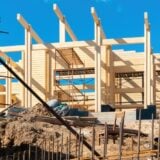Rising home prices and lack of supply mean that people selling their home in the United States are less likely to do it up first, putting it on the market as it is rather than taking the trouble to make it more presentable, new research suggests.
As a result there are 12% more fixer upper homes on the market now than five years ago, and even more among high priced homes in hot markets, according to a new analysis from real estate firm Zillow.
Zillow identified the number of fixer-upper homes listed for sale beginning in 2011 and ending in 2015, and compared them to overall for sale inventory trends.
Nationally, expensive fixer uppers, or those priced within the top third of their markets, saw the biggest surge in inventory over the last five years, rising nearly 35%. Conversely, affordably priced fixer uppers, or those valued within the bottom tier, increased less than 3%.
The firm points out that there are not enough homes on the market to accommodate buyer demand in many metros. As a result, sellers have increasingly more flexibility to list their home for sale as is because they know it will likely still sell.
In Seattle for example, one of the nation’s hottest housing markets, for sale inventory has decreased 10% over the past five years, however fixer upper listings increased 33% over the same time period. Additionally, the age of the typical home sold has also nearly doubled in just nine years. In 2006, homes were 15 years old, by the end of 2015 the median age jumped to 28 years.
‘Across the country, homes are selling fast and for high prices. Sellers are in the driver’s seat, with the freedom to list their home for sale as is without worrying about price cuts or the home sitting on the market. And without sufficient new construction the housing stock has aged, so home buyers are finding more and more homes on the market in need of a little care,’ said Svenja Gudell, Zillow’s chief economist.
Meanwhile, separate research from the National Association of Realtors (NAR) shows that housing affordability is up from a year ago for the second consecutive month. The Northeast had the biggest increase in affordability at 6.4% followed by the Midwest with a more modest increase of 1.1%, the South had the only decline in affordability of 0.1% while the West remained flat.
By region, affordability is up in all regions month on month, led by the Northeast with a rise of 2.9%, the Midwest up 2.5% and the South up 1.9% while the West had the smallest increase in affordability of 0.4%.





